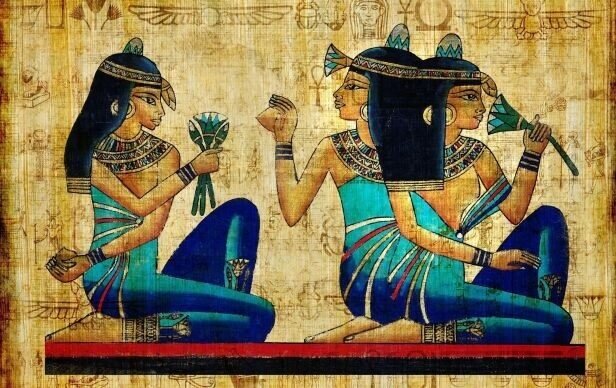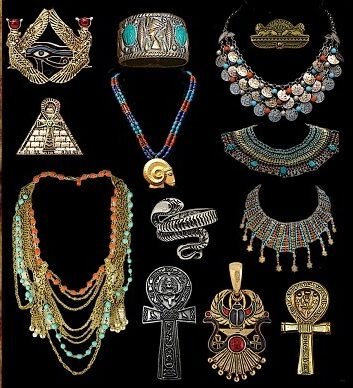There’s a whole spectrum of unique crystals and gemstones out there. Each with its own set of colours, characteristics and vibrations. Gemstones have been used to make jewellery and other decorative items since ancient times.

People of different civilizations and cultures have held gemstones in high esteem, with many believing them to be tools for spiritual growth, empowerment and self-development. From the Egyptians to the Indians, this fascination with gemstones has led to them becoming engrained into many rituals and institutions throughout history.
Many cultures believe that gemstones promote the flow of good energy and use them to relieve specific mental ailments such as depression and anxiety.
History of Gemstones
Throughout history, people have been enamoured by coloured gems. The significance of gemstones in human history goes millenniums back. From the cradle of civilization in Sumer to current times, Gemstones have played a significant role in human history.
The earliest gemstone jewellery dates back more than 25000 years. It is proof of the long conjoint history of gemstones with human civilization. Humans have carried gemstones with them in the form of bracelets, Amulets and rings or cabochons in purses and wallets since time immemorial.
Let’s take a look at the significance that gemstones held across different ancient cultures:
Gemstones in Ancient Mesopotamia

Mesopotamia was an ancient civilization situated in the region encompassing parts of modern-day Iraq, Iran and Syria. Ancient Mesopotamians placed a high value on gemstones and them as a form of currency, adornment and jewellery.
The first use of gemstones in ancient Mesopotamia dates back to the time of Sumerians, between 6000 to 4000 BCE. Sumerian Kings, priests and members of the wealthy upper class used to adorn themselves with jewellery made of precious gemstones such as lapis lazuli.
Historians believe that gemstones cut into pieces of equal size could also have been used as a form of currency, marking the transition from barter to a much more complex economic system.
The incorporation of gemstone jewellery pieces into the temple reliefs further attests to the significance of gemstones for the ancient Mesopotamians.
The economy of Ancient Mesopotamia developed around the import of raw Gemstones due to the lack of local sources in Mesopotamia and the export of finished jewellery products which were especially scarce.
Lapis Lazuli imported from Afghanistan and Carnelian from India were very highly prized. Some other gemstones used by Mesopotamians were:-
- Agate
- Jasper
- Onyx
- Chalcedony
Gemstones in Ancient India
People of India have always had a deep fascination with gemstones and crystals. They are not just used to make jewellery but hold a much deeper spiritual and symbolic meaning in the religious customs of Hinduism.
The first emergence of gemstones in India was during the Indus valley civilization, a bronze age civilization situated on and around the bank Indus river in the area of modern-day India and Pakistan.
Indus valley civilization is considered one of the most advanced civilizations of its time due to the presence of planned cities, a modern-looking sewage system and the use of kiln bricks.
The semi-precious stones were considered to be of immense value due to their colours. The people of the Indus valley practised a specialized craft for bead making to etch a variety of patterns on carnelian beads manufactured for export to Mesopotamia.
The earliest mention of gemstones in Indian literature is found in Atharva Veda. The Khand 19 Sukt 6 of the text states, “Gemstones are auspicious and have multifarious vital powers that are helpful in various phases of life. They are full of energy, endowed with radiance, have powerful effects and bring sweet results”.
Gemstones continue to hold a significant place in the hearts of Indians and play a key role in Vedic astrology. Gemstones are used for spiritual purposes and as tools for astrological remedies- thus adding beauty to a person’s life while simultaneously serving a higher purpose.
Some of the gemstones used by the Indus Valley civilization were:-
- Carnelian
- Agate
- Turquoise
- Steatite
- Lapis Lazuli
Gemstones in Ancient Egypt

Egypt is perhaps the most well-known Ancient civilization in the world owing to the Pyramids left behind by ancient Egyptians in the desert. The pyramids and the treasure they hold have been of great interest to Archaeologists, Treasure hunters and general people around the world.
The treasures hidden inside the pyramids have been a source of immense knowledge of Ancient Egyptian culture. Along with gold and silver, a vast amount of different gemstones have also discovered in Ancient Egypt. The Ancient Egyptians began incorporating gems into their society as far back as 5000 BCE.
Archaeologists found Lapis Lazuli in the tomb of Tutankhamun along with carnelian, turquoise and other gems. Lapis Lazuli found on the mask of Tutankhamun is believed to have been sourced from the Badakhshan region of Afghanistan. Lapis Lazuli was used to make amulets in the form of scarab beetle across Ancient Egypt.
Some stones were thought to possess healing properties. Carnelian was used to bring good luck, while onyx protected against negative energy. It is also widely believed that Cleopatra used powdered down Lapis Lazuli as an Eye shadow.
Some other gemstones used by Ancient Egyptians were
- Turquoise
- Garnet
- Obsidian
- Jasper
- Malachite
Gemstones in Ancient China
The people of Ancient China looked at gemstones as symbols of power, luck and wealth, with stones such as diamonds, rubies and sapphires being used to make jewellery and adorn clothing since the fourth century CE.
Gemstones were valued in ancient China not only for their aesthetic appeal but also for the meanings they represent. In particular, jade has played an important role in Chinese history over thousands of years, becoming an integral part of traditional Chinese culture that continues into modern times.
Jade is translucent and has a glass-like appearance. It occurs in a wide range of colours, with the most sought-after colour being the captivating apple green.
Different coloured stones had specific meanings attached. Green was associated with harmony and balance, white with purity, and black symbolized power.
It has been mined in China since the Neolithic times and was used to make ceremonial weapons, Cups, Bangles, Ritual objects and grave markers for the high-ranking members of the royal family as it was believed to prevent the body from decaying after death and to ward off evil spirits.
Some of the gemstones used by the Ancient Chinese were
- Jade
- Amethyst
- Aquamarine
- Topaz
- Citrine
- Sapphire
- Rubye
- Pearl
- Emerald
Gemstones in Ancient Greece
Ancient Greeks believed gemstones had magical properties and were capable of bringing good luck and health. They also used crystals and gems to denote social status and ward off evil spirits.
Ancient Greek stories often featured gemstones, such as Prometheus using Topaz to steal fire from the gods and goddess Athena wearing Jade jewellery.
In the minds of the ancient Greeks, these stones carried a variety of magical powers. Gemstones were used as talismans, protection charms, amulets and signified status or power.
Some of the gemstones used by the Ancient Greeks were
- Jade
- Topaz
- Moonstone
- Emerald
- Opal
